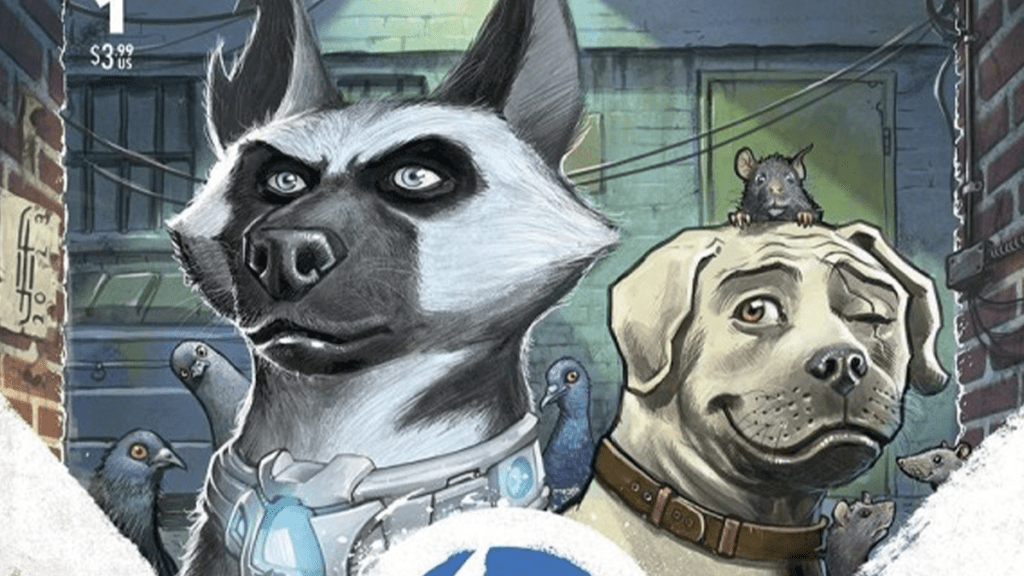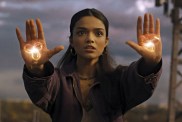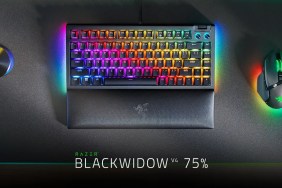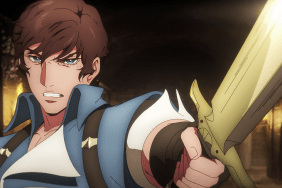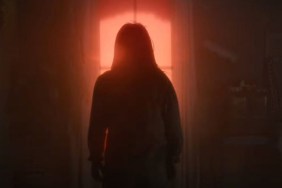ComingSoon Editor-in-Chief Tyler Treese spoke with gaming icon and Scrapper creator Cliff Bleszinski about his new comic series. Bleszinski discussed the process of working on a comic and his old website, Catscan.com.
“Blade Runner-style action mixes with big emotions as stray dog Scrapper and his buddy Tank fight for justice against the totalitarian forces of a post-apocalyptic domed city,” reads the comic’s synopsis. “But when the fight comes to his home Scrapper will face losing what’s most important to him and gain a terrifying truth in the process. (Don’t worry Mom. The dog doesn’t die.)”
Tyler Treese: Cliff, first off, congrats on Scrapper. Talk to me about the freedom with that idea and everything you can do with a dog vigilante, because I thought you made such a great point. What happens when these kids that grow up on Paw Patrol grow out of that, but they still love dogs and they’re still looking for that next step?
Cliff Bleszinski: I feel like there’s a giant gap missing in regards to the old school kind of Don Bluth vibe, right? You know, Secret of Nimh, All Dogs Go to Heaven, things like that. I actually got to meet Don Bluth at our local, local Comic-Con, and I got to give him a copy of the book and he leafed through it and said, “This is great.” So we actually used that quote in one of the upcoming books. But that’s the thing, there’s this trend these days where … what was going on for years where everyone was aping the Pixar animation style, right? You know, DreamWorks is doing that DreamWorks face, right? Then what we’ve seen is this resurgence of 3D that looks 2D with Into the Spider-Verse.
And literally tomorrow night, we’re going to go see the new Teenage Mutant Ninja Turtles movie, which almost looks like it’s stop-motion, right? I think it’s such a refreshing look and a refreshing style. I really think … my gut says there’s room for this in the zeitgeist, and I can see it as an animated series. I could see it as a toy line, I could see it as a video game. And that’s the benefit of me having worked in video games as long as I did. Video games are often defined by what verbs the protagonist can do. Can you run? Can you jump? Can you shoot? Can you slide? Whatever, right? Scrapper has a lot of abilities, but the thing is, I believe that the world has heart. And that’s one of the biggest things. They free up the superhero stories, right?
Yeah, and this is such an interesting departure because you get to learn everything that goes into comics. There are so many different aspects that fans look at the finished product or that they don’t really think about. What has been the most revealing thing about working with Alex [De Campi] and learning about this entire process of how a comic goes from you two coming up with the story to working with a great artist and all the steps in between?
So I initially was going to make it as kind of a video game pitch, right? Imagine if Batman was a dog, right? And again, a badass, PG-13 dog, right? And the the thing is, it all started with my friend John Nee, who used to work at Marvel and Cryptozoic. He’s knee-deep in that comic book world, and then he introduced me to Alex de Campi, and I was thinking, “What would be the best way to make this property get eyeballs on it?” I’ve loved comics my whole life, you know? I came up reading Spider-Man and then eventually graduated to Preacher and The Boys and whatnot. I love Mark Millar’s work. My wife and I are actually going as Kick-Ass and Hit-Girl for Halloween this year.
The thing is, learning this process has been utterly fascinating because for issue one, when we were working with Sandy Jarrell, Alex and I — again, I made the overall world, but then I partnered with Alex for her to explain to me how panel one top left, 2 creatures in the frame, blah, blah, blah, blah. Right? Then, Sandy was kind of a one-stop shop of doing the pencils, then doing the inks, then doing the coloring, and then Alex did the lettering. I remember … I think it was a Jay and Silent Bob movie where they were talking about comics. And like, you just draw over other people’s stuff.
You just do letters. But it’s all … they were all unique art forms in their own way. Then, due to a scheduling conflict, we wound up going with Ryan Kelly for pencils and inks for the issues two and six, and Jordie Bellaire for the coloring. Issue one, I believe, looks great. I think two through six, though, look phenomenal, in my opinion. Then just to get back the panels, like when I’m sitting there at a restaurant with my wife and I open an email that has some content in there, looking at the way it’s framed … it’s literally like directing a movie to some extent. That’s one thing that Alex de Campi brings to it. She’s directed music videos and she’s also acting as a pro a producer on it, you know, nudging the artist to keep things going. So it’s been an utterly fascinating process. Learning how the comic book world works and seeing how the sausage is made. I just hope it doesn’t ruin the comic book experience for me, kind of like how it ruined the video game experience for me. [Laughs].
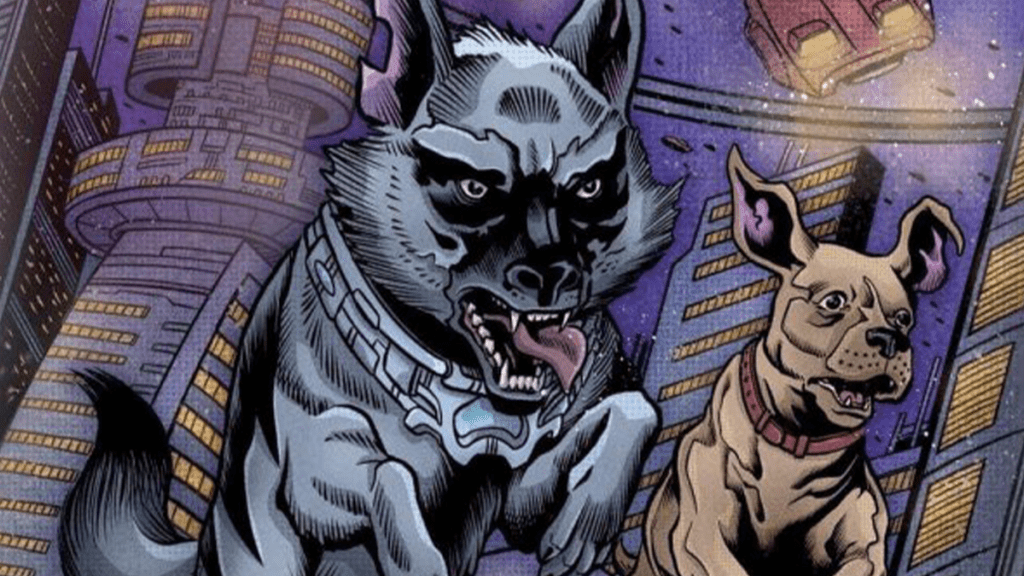
Hopefully not. I love that pitch of “Batman as a dog.” That’s such a fun way to put it. And visually, Scrappy looks so cool. How was it, going through that process and really figuring out what his look was and what the style was going to be with the artist and honing in on the look and feel of this world?
Well, the good thing is that I actually paid for this whole thing out of pocket, for the record. But the thing was I had it concepted long before I even got in touch with Alex de Campi. Scrapper’s look … I wanted to take the puppy to the teenager, to the adult, to Hulk-out mode, right? And that’s the thing — it goes back to … think about Breaking Bad. Vince Gilligan said he wanted to turn Mr. Chips into Scarface. There’s so many frames where you see Scrapper as this sad, lonely puppy that gets taken in by Vito and Rosa, but then eventually, you mess with him and you see him Hulk-out and there’s little touches in there too, such as his coat — the more he gets powered up, the more indigo it becomes, because it’s made of nanotechnology and it makes him fireproof and things like that.
That’s the thing, you know? It’s been very iterative. That’s the thing I’ve learned about all of these industries that I’ve gotten involved with: the restaurant industry, Broadway, video games, comic books, writing a memoir — everything is iteration in life. Same thing with relationships, even. You iterate, you iterate, you iterate. Having that really good push and pull with Alex and … we vibe really well. We have occasional disagreements — who doesn’t as a creative — but most of the time, it’s a really good setup. She has a really, really good eye. So yeah, again, iterate, iterate, iterate.
The number of small details in the first two issues are great. I really like all the pigeons that are big fans of Scrapper — they’re a character in and of themselves. Same with the rats. There are a lot of like small details that are really fun for the comic. How fun has it been to add those? Obviously, you’re used to world building with games, but getting to deploy that in another medium and making sure there is so much in each panel for people to digest must be fun.
Thank you. Again, I could take credit for everything, but working with Alex has been so great because there’s this panel in issue two where the dogs wind up at essentially the equivalent of Times Square in Dome City, right? And there’s the big bad on the jumbotron and there’s all these little letterings talking about, “Be in debt, be in debt,” and then Scrapper encounters people who are essentially in debtor’s prison who are publicly shamed. It’s kind of a statement on late stage capitalism in some ways. It’s a statement of gentrification and it’s also a statement on urban animals.
I mean, the thing I had mentioned at the back of issue one was going to New York City with all the Broadway endeavors nonstop. I believe it was Jeff Goldblum in the first Jurassic Park who says, “Life finds a way.” Anyway, that’s the thing is seeing the pigeon, seeing the rats, seeing the stray dogs and the stray cats and things like that — animals are totally in the zeitgeist. That video game, Stray, came out about the stray cat and now you have the upcoming movie called Strays about the foul-mouthed talking dogs. There’s really room for stuff like this, and you can’t go wrong with it. I really believe I have something special here, and I haven’t felt this excited since the first Gears of War game gestated and came out.
That’s incredible. Naturally, you could see if it’s successful and continues to be successful, it’s just a natural fit for an animated series or a video game. Have you been thinking about ways that could happen? Have you thought much about the possible expansions here?
Oh, yeah. I mean, first off, since it’s a domed city, you know that the number one question is, “What’s outside the dome,” right? “What’s in the box,” right? It was initially built to be an IP that could be shoppable as a movie or an animated series. I actually signed with an agency in Los Angeles called Grandview, and basically, they were starting to shop it around, but then, of course, the understandable strike hit. Hopefully, terms are negotiated and that kind of blows over at some point so we can actually really seriously shop it around, because I think the story arc from issues one through six is actually really, really interesting.
Stuff goes down in later issues that I hope makes people catch some feels, because I’m a big fan of the speech from Jimmy Valvano, who was a college basketball coach. He died of cancer a while back, and he was winning the award at the ESPYs, and he said, basically, to summarize it, you can do three things in one day: laugh, think, cry. Then do that seven days a week and you’re living a good life. That’s what I believe we, as entertainers, want to provide for people. I’m the crier in the relationship — my wife almost never cries. I literally look for ways to catch feels on a daily basis. At the end of the day, I’ve never slept well, but if I catch some feels throughout the day, I sleep like 30% better … that’s very specific.
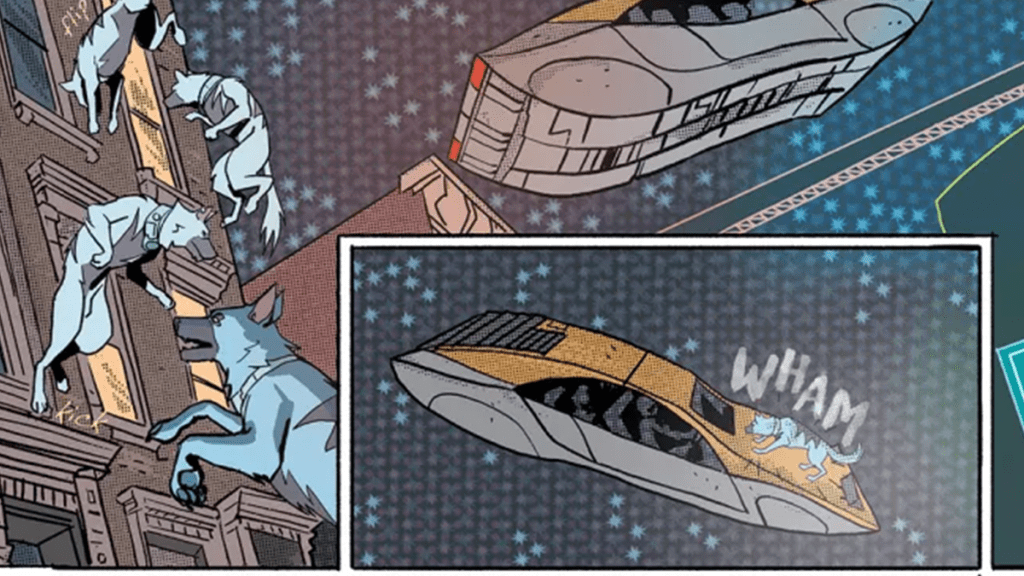
You mentioned Don Bluth giving his feedback and you have that quote from Jim Lee on the first issue.
Jim’s the best.
How surreal is that he got to take a look at your comic and liked what he saw? That had to be incredible.
I’ve known Jim for years, man, and somehow, I’ve stumbled into my Rolodex being really deep. That’s not a flex, it’s just pretty good at what I call “power networking.” And actually, a few years back, he got Jim to draw my wife as a superhero, which is framed up in our office right now. Jim’s so kind. He’s so sweet, so talented. And I hit him up. I was like, “Can I get a favor, Jim?” I got a blurb on it Seth Green, uh, on issue two.Then I’m working on getting a blurb from Gary Whitta, the writer of Rogue One and The Book of Eli, and I’m going to give him a blurb for his book, Gundog, which he’s going to FedEx over to me.
And that’s the thing — sometimes it’s the left hand watching the right, it’s quid pro quo. If you’re not weird and not a dick and you’re a creative, you’d be surprised at the circles you can infiltrate. It’s funny because at the end of the day, I like money. I live in a big dumb house, fine, whatever. But the thing is, as a creative, you’ve made an impact on people. I was at one of the Comic-Cons and this woman came up and told me Gears of War saved her life. She was middle-aged, and she asked me to sign her stuff, and she was crying in front of me, and then she made me cry.
When people start getting tattoos of the things you’ve worked on, that is the ultimate honor. And it goes back to one of the favorite scenes — I always love watching the scene from Dr. Who, where Matt Smith and Karen Gillan take Vincent Van Gogh to the Musée d’Orsay in Paris, and show him that posthumously, he would make such tremendous impact, because he’s a man who barely could sell a painting when he was living. Then the actor who looks just like the painter just loses it and just goes for it. It’s a incredibly powerful scene and I get misty-eyed every time I watch it, because at the end of the day, you just want to know you made an impact, you know?
Yeah, that’s a great scene. Now that we have two issues of Scrapper out there, what sort of feedback have you been getting? Or how’s it been to see this out in the world and people enjoying it?
I think I’m confusing the crap out of my video game fanbase. The saying in politics is “play to your base,” so that’s one thing. I’m friends with John Romero — Doom, Quake, etc. — and John is so good at playing to his base. His book’s out now, by the way — it’s called Doom Guy. He’s sending me a signed copy. I can’t wait to read it, because he was my idol growing up. The thing is, the video game fans are so confused with my recent pivots. I plug it, but allegedly … people tweeted me that it’s sold out in New York, which either means it’s selling really well or that Image underestimated the amount of orders that they would need.
So it seems to be on a lot of people’s pull lists — that’s another term I didn’t even know about it. I’ve read comics for years and I don’t even know what a poll list was, right? For me, the high of going to my local comic shop … first off, comic shops usually smell amazing. That smell of that fresh ink, tight? I prefer physical media over digital when it comes to my books and comic books because we stare at glowing rectangles all day long. But to go in there and to actually see the physical copies and then to do a signing for it and everything like that … it literally felt like the time where I went to the mall and I saw the giant placard advertising the first Unreal Tournament at Electronics Boutique. As a creative, that’s yet another high. I really think we’re always, as creatives, chasing that dragon.

I think it was said in the first or second issue that the cats have disappeared from the city. Were people trying to scan them to send them to your old website? How did all the cats disappear?
Oh my God, you just brought up catscan.com. [Laughs]. For those who don’t know, I had a website back in the day — way back in the day in the late ’90s — called catscan.com. One day, my cat got in my flatbed scanner and I just scanned the cat and I posted it. Then I encouraged other people to scan their cats. Then I wound up getting a tremendous amount of hate mail, and I wound up posting the hate mail with snarky replies, trolling back to them. The thing is, in Scrapper, cats were the first test for SMITE — the bad guys. This a military experiment and, surprise, cats wouldn’t listen to orders. [Laughs]. Then all the cats vanished. But if you look carefully in issue one in the background, you might see a silhouette or two. So they may show up at some point.
That’s exciting. Wasn’t the internet just such a nicer place before? You’ve always been very interactive with your fans and very outgoing, but does part of you miss where you could just make a silly website like catscan and it becomes this whole thing? I feel like that’s not really as possible now.
I feel like it’s gotten exponentially worse. I don’t know if it’s just me getting older, but people come at me every day online and the thing is, if you come at me online, I’m going to come back at you 10 times as hard. It reminds me, I’m a big fan of stand-up comedy. I want to try stand-up at some point. I somehow infiltrated that world and became friends with a bunch of stand-up comedians. I got drunk with Doug Stanhope backstage at one point. I had wine with Sam Morril, Erica Rhodes is a friend. It’s one of those things that is kind of like hecklers.
If you go to a stand-up show and somebody starts heckling, first off, this is a person in the audience who’s probably had 16 Coronas and you’re dealing with a person who does this every day on stage with the mic, with lights on them, and the crowd is on the comedian’s side. There’s no shot you’re going to outwit this person. Either you’re just going to shut them down … sometimes I go down the rabbit hole of watching crowd work from stand-up comedians, and that’s kind of like what it’s like on the internet if you have a decent following. What Michelle Obama said, I believe was a mistake. “When they go low, we go high.” No, when they go low, you have to go lower.
I could definitely see you excelling with like crowd work as a comic. That would be very fun to see.
Oh dude, I’m friends with Joe Rogan, right? I did his podcast a few times. I went to go see him in Charlotte and afterwards, after the show, Joe and I went to a titty bar, blah, blah, blah, blah — with my wife, for the record — and some guy came up with a copy of one of Joe Rogan’s CDs and a copy of Gears of War, and then Joe and I both signed them together. But the thing is, Joe Rogan was looking at a guy in the audience who was heckling him, and Joe says, “Is that your girlfriend?” And he’s like, “Yeah, that’s my wife.” And he looks at the girl and says, “Do you have to work?” And she says, “Yeah.” He looks at the guy and says, “Watch your back buddy.” [Laughs].
